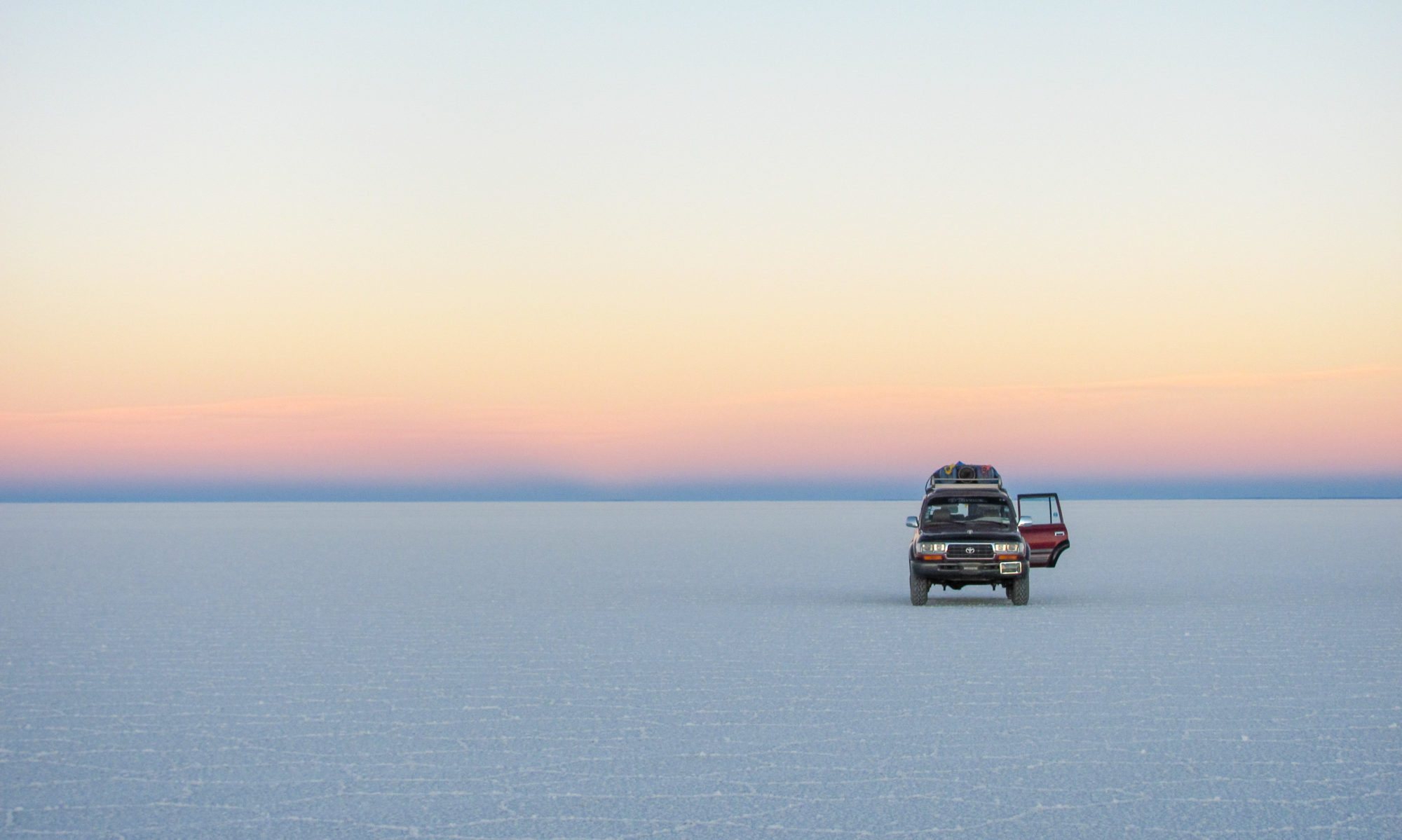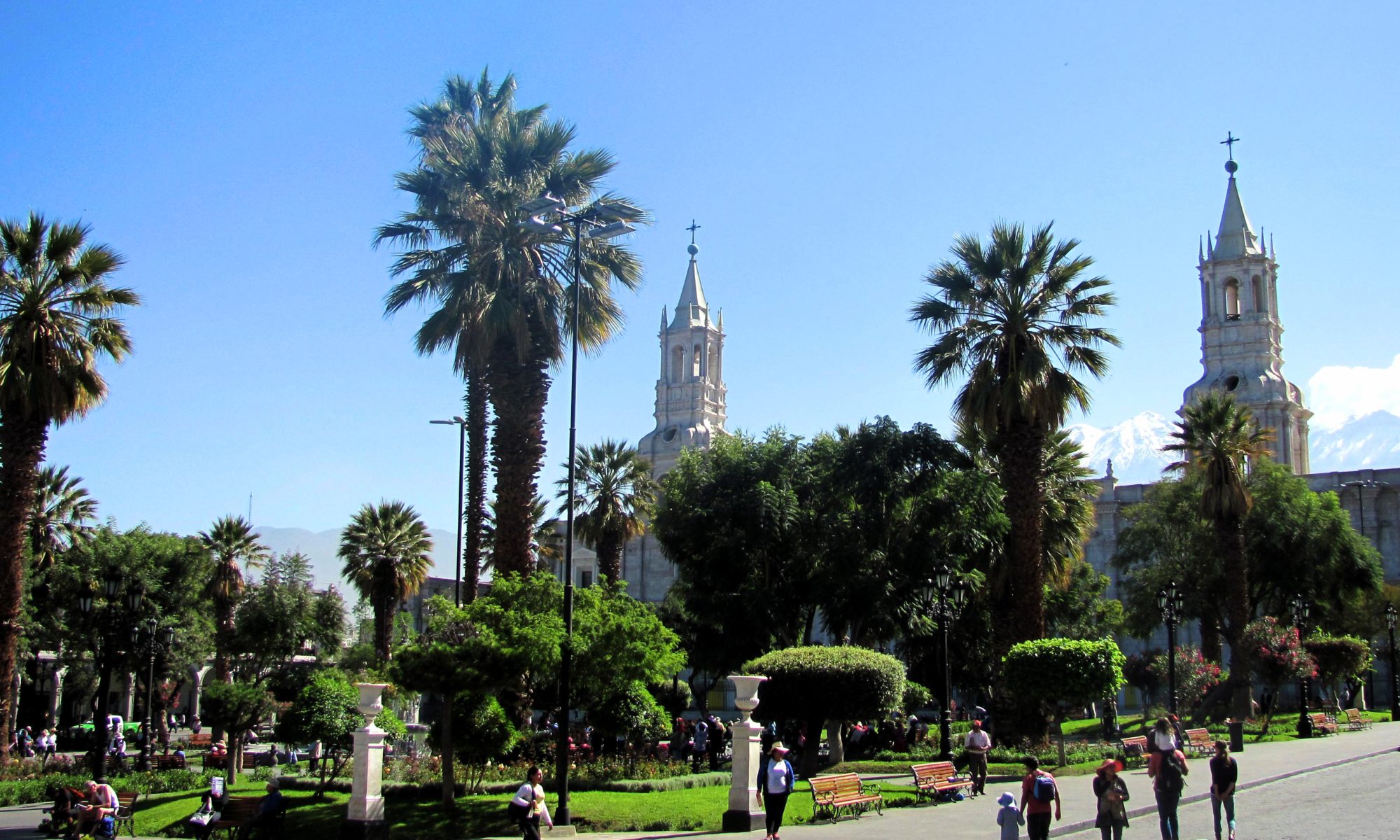Arequipa, often dubbed ‘the white city’ is the colonial pride of Peru. The second-largest city in the country combines beautiful colonial buildings with all modern amenities of a large urban dwelling. It is situated about 2300 meters above sea-level making it the perfect place to acclimatise to the altitude before visiting Cusco, Machu Picchu or Puno which are all a lot higher up. And with the Colca Canyon, El Misti and Chachani on its doorstep, there is really no reason to skip this beautiful colonial gem. The question that remains is, what to do in Arequipa?
– What to do –
Visit the colonial buildings
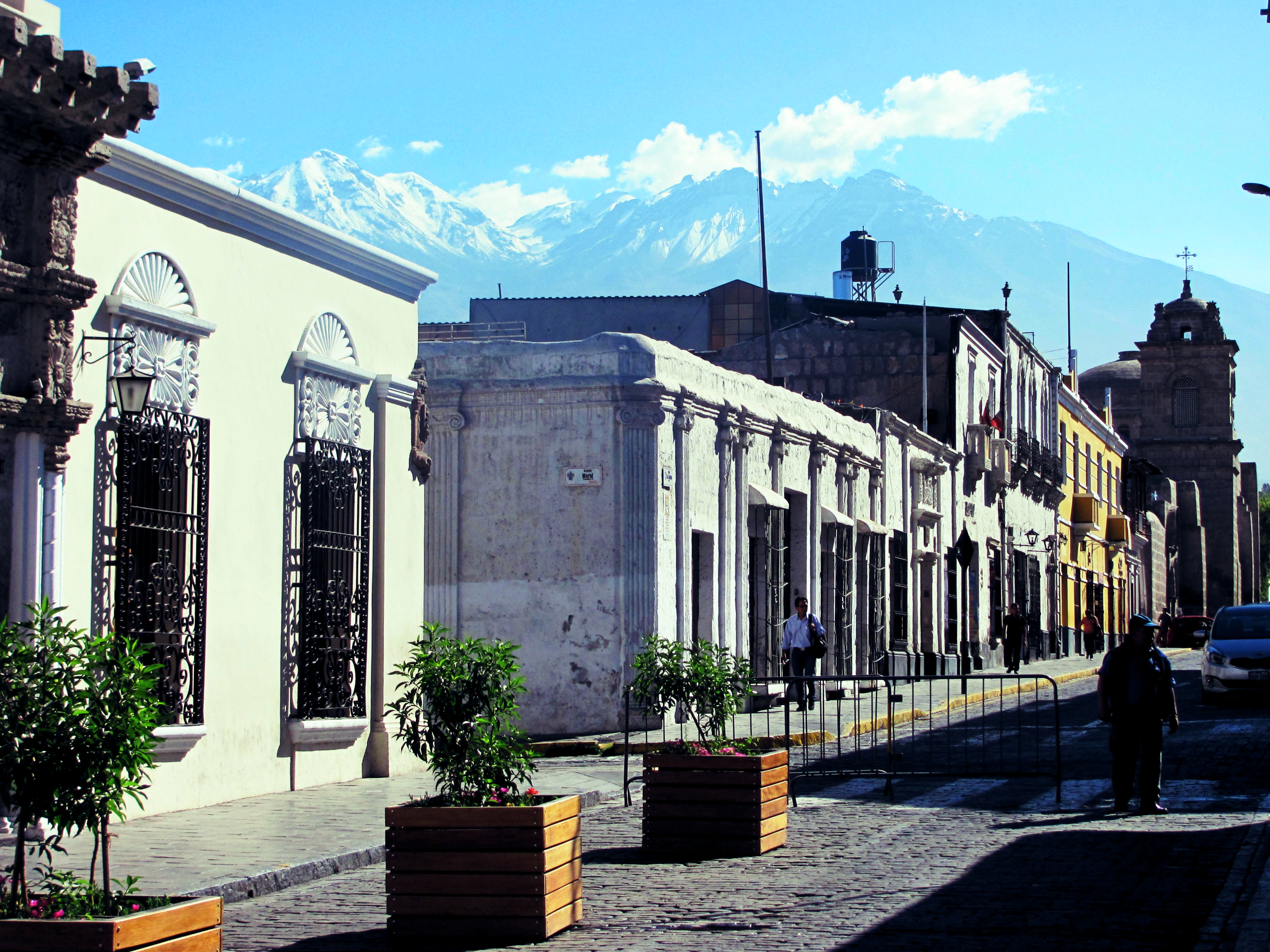
The ‘white city’ thanks its name to the white sillar stones that are used in most of the buildings in the colonial heart of the city. This combined with the constant perfect bright light from the sun makes Arequipa one of the most picturesque places in Central-America. So if you are still wondering what to do in Arequipa, here is your answer. Check out the colonial buildings.
A self-guided walking tour between the several sights is a perfect way of going at it. It allows you to not only view the main sights, but also soak up the details of the less famous buildings. The altitude, climate and distance between the sights in Arequipa is all very doable. This makes the walk not overly strenuous.
The route for your self-guided walking tour
Start at the Plaza de Armas as with most Peruvian cities, it lies at the heart of the old center. Pay a free visit to La Cathedral, which I found somewhat underwhelming but considering it is free you might as well check it out.
Walk to the Monasterio de Santa Catalina and take your time to explore this huge and beautiful monastery. There are always university students around that give guided tours in good English for a very reasonable price. They charge around 20 soles. If you are keen on going at it by yourself the walk through in the Lonely Planet gives good guidance.
La Juanita
Take a small detour by walking back to the plaza through San Francisco street but walk a bit further until you hit Museo Santuarios Andinos on your right. This museum focuses on ‘La Juanita’, the ice-maiden and is not only interesting but also well set up. La Juanita is a frozen mummy of a 12 year old Inca-girl that was discovered in 1995 after the eruption a nearby volcano melted layers of snow and ice covering her. Having been frozen for over 500 years she was perfectly preserved. Researchers quickly discovered that she died as a sacrificial offer to the mountains by the Inca’s. The museum gives interesting insight into the expedition that led to the discovery of La Juanita. It also explains a little about old Inca folklore. The museum costs 25 soles. Half if you carry a student-card. It includes a guided-tour that is provided both in Spanish and English.
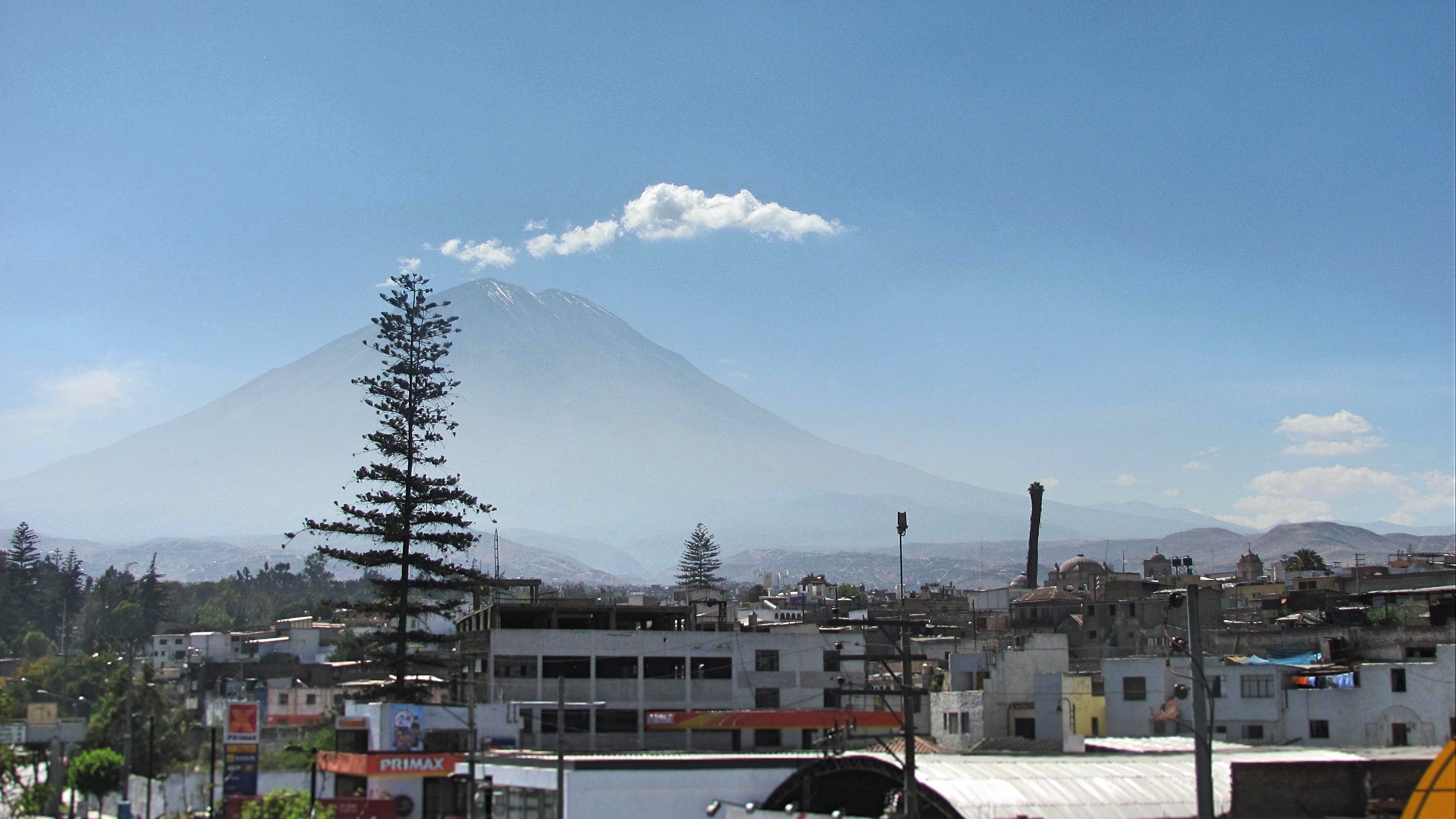
Mirador de Yanahuara
Next, take a taxi for about 3 soles or collective for 1 soles to Mirador de Yanahuara. The neighbourhood Yanahuara has some nice old streets, and an interesting old church. The church is located next to the mirador but the main draw here is the viewpoint itself.
You get a perfect view of El Misti towering over the city through a sillar archway. Walk back to the plaza which will take about 45 minutes. The walk passes by many restaurants so there are plenty opportunities for a stop or to combine this visit with lunch or dinner.
There’s always more to explore
Arequipa is filled with many more churches and interesting colonial sights but unless you are staying for a week or more, I recommend sticking to the above. Additionally, spend some time exploring the sights surrounding Arequipa. Use the city as your base-point.
Bull fights on Sunday
If you are visiting on a Sunday it is worth mentioning that bull-fights (peleas de toros) are organised in Arequipa. They are not as bloody as the traditional Spanish ones but it can still be quite disturbing to watch. In Arequipa, bull fights are bull on bull. The last bull standing wins, the fight is to the death. For me personally this is not the kind of attraction I look for, but to each its own.
Around Arequipa
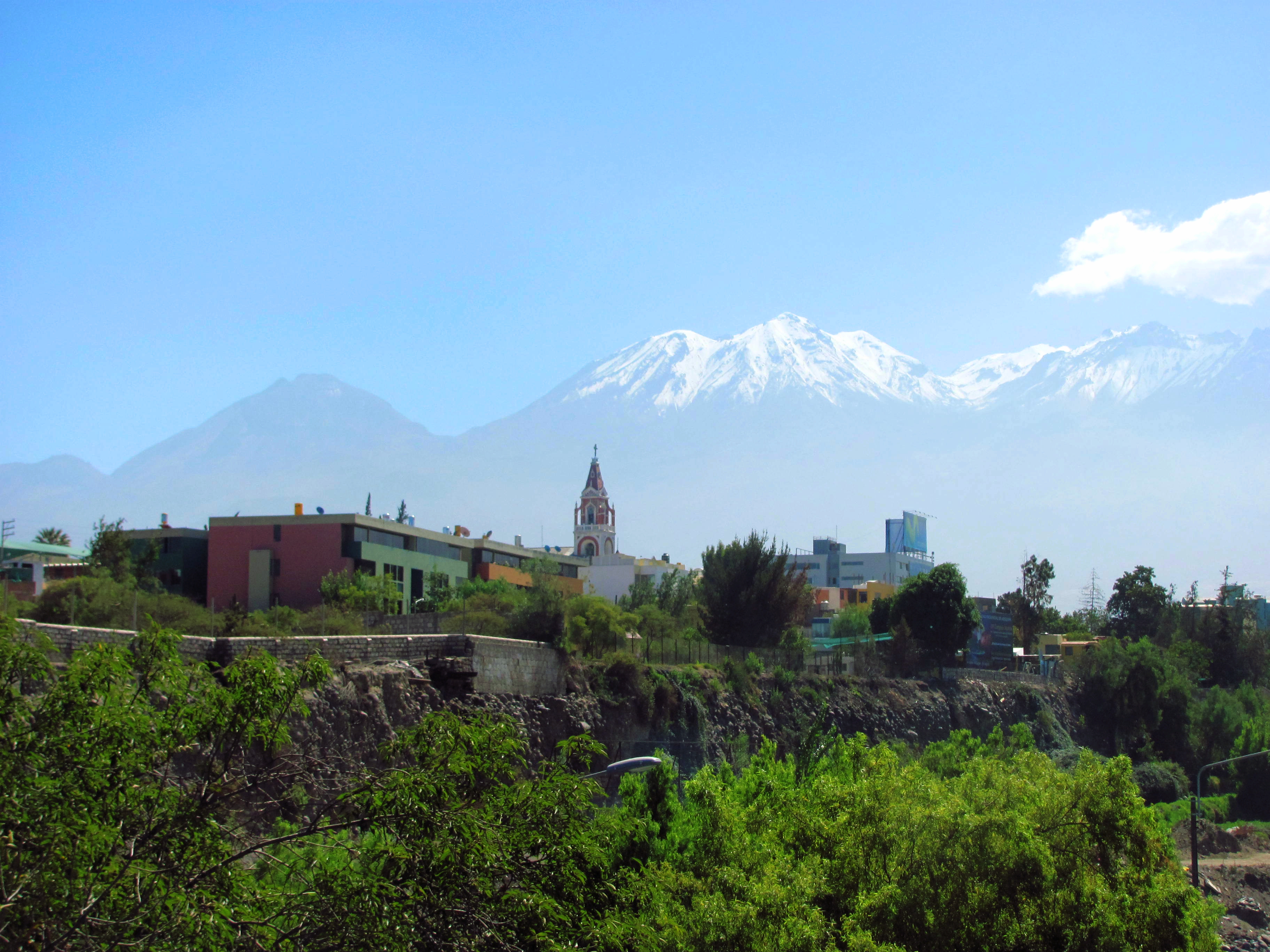
The biggest thing to do in the vicinity of Arequipa is the Colca Canyon (read more on that here). The canyon is the second-deepest canyon in the world and is the home of a big colony of Andean Condors.
The nearby river Rio Chilli offers excellent rafting and kayaking but if you are really keen on some outdoor adventures, one of the best things to do in Arequipa is attempting to summit the Chachani. This peak is considered the easiest 6000M+ climb in the world so this is the perfect summit to get that milestone out of the way. The iconic El Misti volcano is slightly lower but a lot harder. Only go for it if you have some climbing experience.
All these treks take at least two days. The Colca Canyon can be visited as a day tour but I do not recommend it. Take this into account when planning these expeditions. Also take in mind that it might not be possible to head out on a guided summit attempt the very next day as especially El Misti is not climbed on a daily basis.
– Eating & Sleeping –
What to do in Arequipa is of course also sampling the local cuisine. After Lima, Arequipa hosts Peru’s best food. The spicy pork-stew Adobo is a classic and traditionally only served on Sunday-mornings. so if a restaurant has this on the menu and it is not Sunday-morning you probably walked into a tourist-restaurant and are better off eating someplace else. Look for Picanteria’s, communal restaurants that serve spicy (as is true for most food in Arequipa) but delicious food. If you are craving amazingly good fast-food, go to La Lucha
Sleeping
We found out that Booking.com will consistently give you the best rates on hotels. To make finding the perfect spot a little easier we made a selection for Arequipa. Click the link below to find the best places to stay in Arequipa.
MB Backpackers
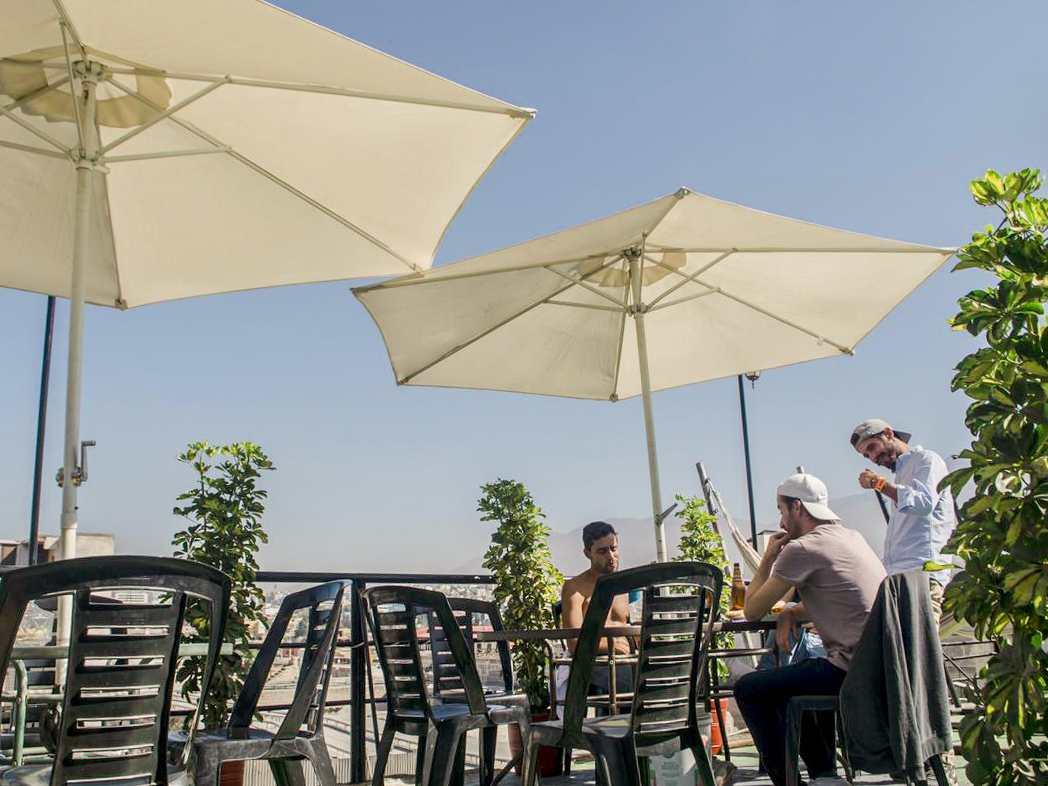
If you are looking for a good place to rest your head I can recommend Hostal La Mercaderes (often called MB Backpackers) which has a superb location, good beds, good vibe and an awesome rooftop-terrace.
– Practical information –
When
Arequipa’s desert-climate means it receives virtually no rain but because of its altitude the temperature is very pleasant throughout the year. Expect sunny days with daily highs around 25 degrees Celsius and 8 at night.
Budget
| Daily Budget | 40 EUR ( 45 USD) |
| Street food | 5 EUR – ( 6 USD) |
| Meal in a restaurant | 10 EUR (12 USD) |
| Dorm | 8 EUR – (9 USD) |
| Double in a 3-star hotel | 25 EUR – (30 USD) |
In & Out
Arequipa hosts an airport as well as a big bus-terminal (terminal de terrestere). The best way to get to them is by taking a taxi. There are buses and collectivo’s to the bus-station but with the taxi’s being only a few soles it is not really worth the bother. Just stand at the side of the street and wave your arm at any car that passes. Approximately 1 in 7 is a taxi and will take you. This works everywhere in Peru. When traveling after dark caution should be taken but during the day also the ‘illegal taxi’s’ are a reasonably safe way of transport.
– Things to take when traveling to Peru –
There are a few items that I would pop into my bag for a trip to Peru. Firstly, always take many layers of clothing with you. Being in the Andres means that the weather switches rapidly. Be prepared for both sunshine and rain. But more importantly, be prepared for rapid switches in temperature. Thermals and swimming shorts in the same daypack? In Peru its not as weird as it sounds.
Fjallraven trapper hat
Even in the coldest nights on the altiplano you won’t get cold ears while wearing this trapper hat. It’s simply not possible. The big advantage of trapper hats compared to beanies is that they warm up your whole head instead of just the top and they fit tightly around your head, meaning you wont lose it while mountaineering in the Andes. Fjallraven Kanken is a Swedish premium brand that uses sustainable materials. Also their products just look damn good. It’s a little investment, but one that’s worth it.
Thermals
Besides wearing a warm hat or beanie, the best addition to your travel wardrobe is skintight thermal underwear. Super comfy, light, small to pack and it transforms any normal pants into super warm isolated pants. I value thermal underwear over a thermal shirt because to warm up your upper body you can simply stack all the shirts you are carrying on top of each other while stacking multiple pants is harder. Also your legs are not used to this added layer so wearing thermals will work wonders on the ‘feel temperature’. LAPASA thermals are designed for travel and come in at a very good price.
Power bank
The usefulness of a power bank is self-explanatory. Being able to charge your phone, tablet, camera, GoPro or e-reader on the go has made traveling so much easier. I use this particular power bank over a year now and its just perfect. The 20,000mAh provides my IPhone with about 5 charges, the double port means I can charge my camera and phone at the same time (or be a life saver for the person sitting next to me) and the LED torch in the middle is super useful when you try to find something in your bag on the bus in the middle of the night. The display is useful as well and tells you a whole lot more about the current charge compared to ‘3 out of 5 lights left’. Oh and it comes in at HALF THE PRICE of a Anker power bank. I have yet to find its flaws.
Lonely Planet
Because its just the best compact travel guide out there. I always take a lonely planet with me for its practical information, background on certain sights and for when I find myself unexpectedly off the beaten path in search of accommodation for the night. For me this is still the best way to read up on a destinations in long haul bus rides. You don’t need internet or battery-life which even on a luxurious bus in Peru can really come in handy sometimes;)
